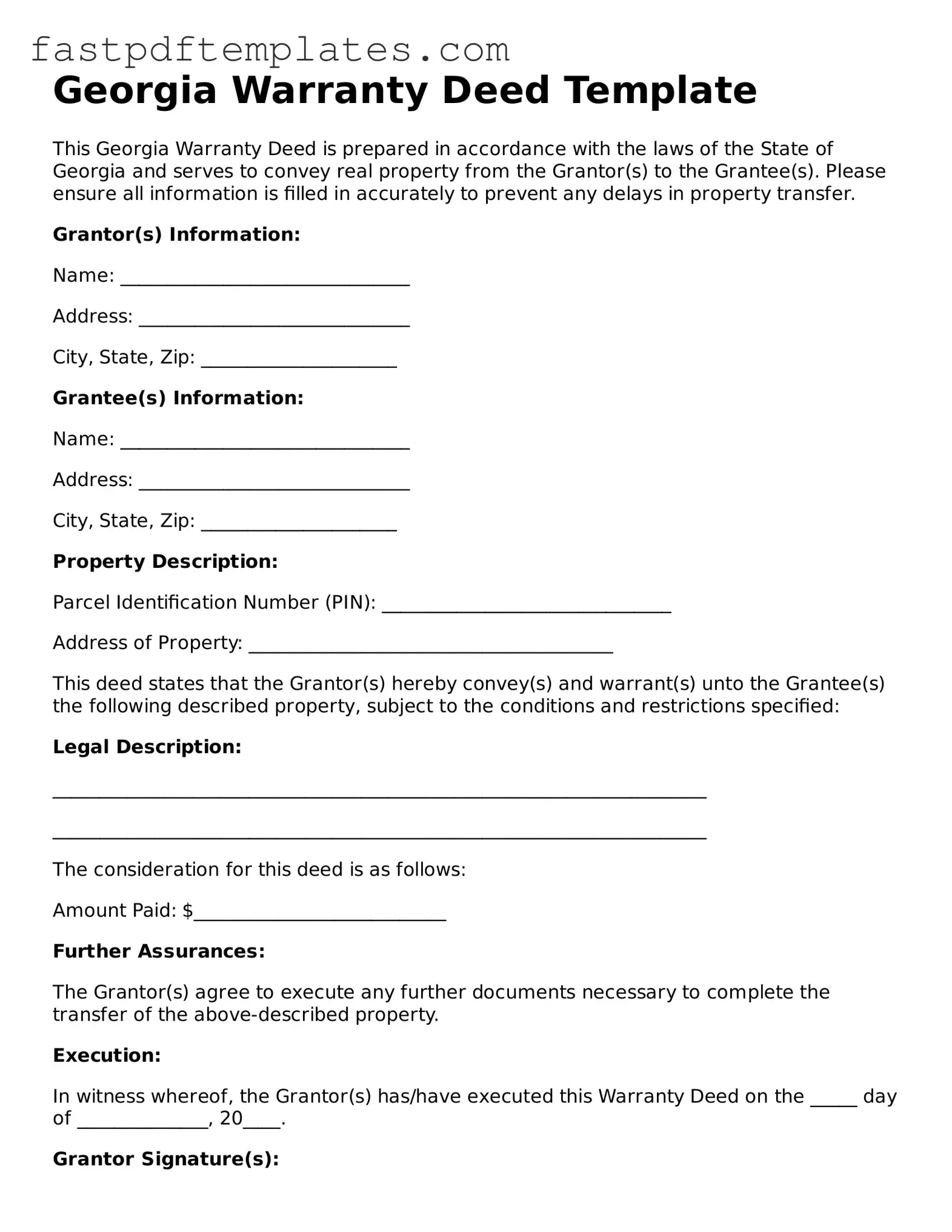Georgia Warranty Deed Template
This Georgia Warranty Deed is prepared in accordance with the laws of the State of Georgia and serves to convey real property from the Grantor(s) to the Grantee(s). Please ensure all information is filled in accurately to prevent any delays in property transfer.
Grantor(s) Information:
Name: _______________________________
Address: _____________________________
City, State, Zip: _____________________
Grantee(s) Information:
Name: _______________________________
Address: _____________________________
City, State, Zip: _____________________
Property Description:
Parcel Identification Number (PIN): _______________________________
Address of Property: _______________________________________
This deed states that the Grantor(s) hereby convey(s) and warrant(s) unto the Grantee(s) the following described property, subject to the conditions and restrictions specified:
Legal Description:
______________________________________________________________________
______________________________________________________________________
The consideration for this deed is as follows:
Amount Paid: $___________________________
Further Assurances:
The Grantor(s) agree to execute any further documents necessary to complete the transfer of the above-described property.
Execution:
In witness whereof, the Grantor(s) has/have executed this Warranty Deed on the _____ day of ______________, 20____.
Grantor Signature(s):
_____________________________ (Signature)
_____________________________ (Printed Name)
Witness Signature:
_____________________________ (Signature)
_____________________________ (Printed Name)
Notary Public:
State of Georgia
County of __________________________
Subscribed and sworn before me this _____ day of _______________, 20____.
_____________________________ (Notary Signature)
My Commission Expires: ________________
Please ensure that this document is properly signed and notarized for it to be valid under Georgia law.
